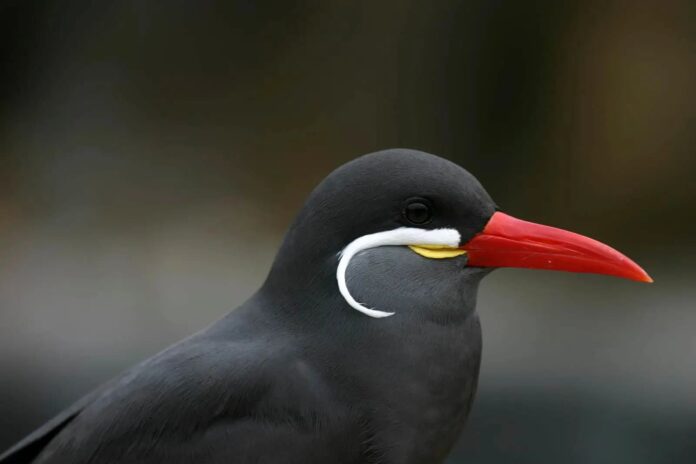Birds with beards are the examples that anything is possible in the nature, without a doubt. We are always fascinated by random things, and unique appearances are clearly among those. You will find 6 birds with beards below, and they look absolutely funny and nice at the same time. Let’s take a look and see which one is your favorite.
1Bearded Barbet
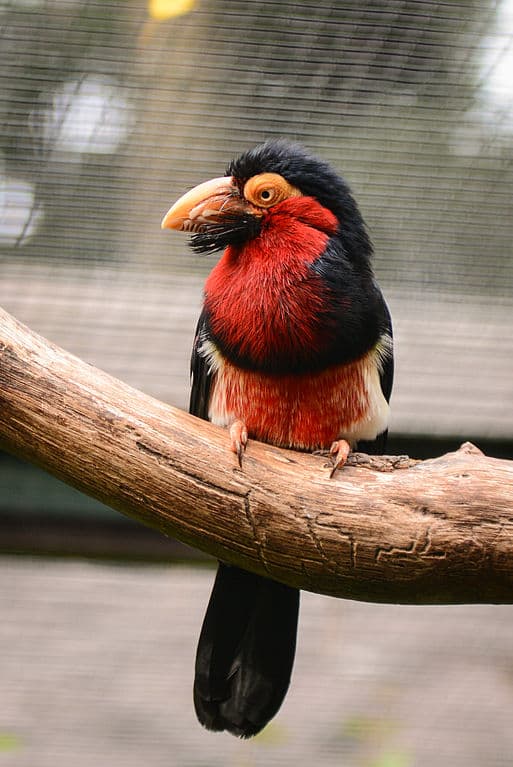
Scientific Name: Lybius Dubius
The black beard of black bristles that contrast with the red throat feathers says it all, simply one of the most striking birds with beards. This plump bird has a black crown, back, tail, and breast band while the throat and belly are red. Its large bill is very thick, and it is yellow in color. Another unique thing about the bearded barbet is the adaptation on their beak that functions almost like teeth. If you look closer, you will see saw-like edges on their beaks that allow them to cut tough fruits. More than that, they also help the birds to bore holes in rotted trees for nesting and roosting. This barbet species lives in tropical forests of West Africa where their most favorite fruits are abundant, figs. These arboreal birds are common in gardens and wooded country, and they like to be in areas with fig trees.
2Bearded Bellbird
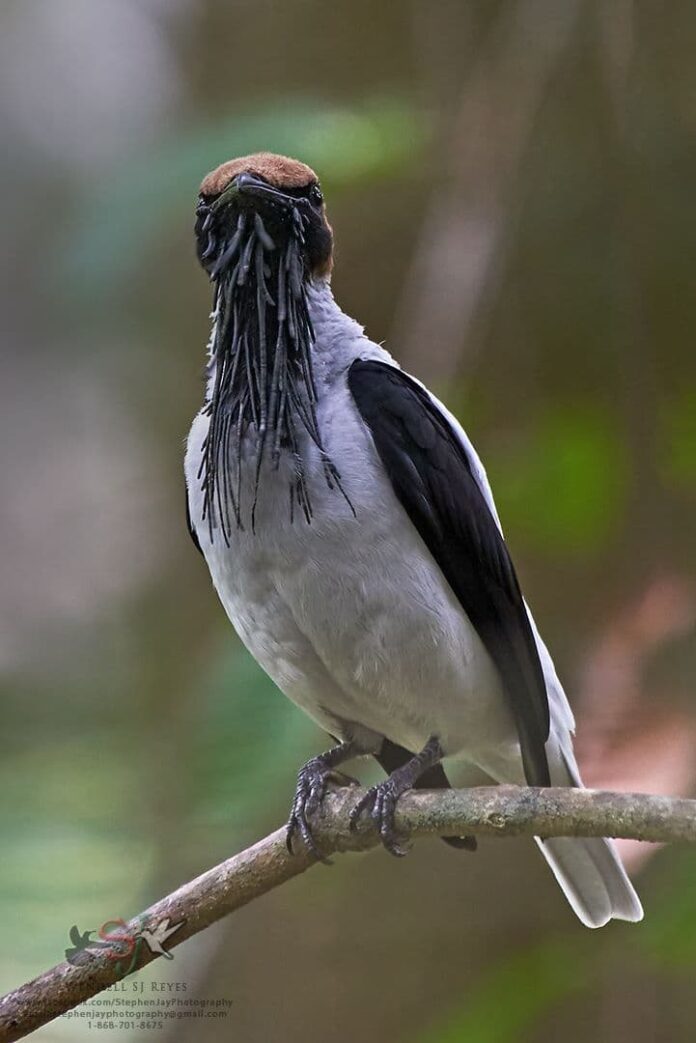
Scientific Name: Procnias Averano
A bearded bellbird has a white plumage with a brown head and black wings. It is very easy to recognize this bird, that scruffy beard of unfeathered wattles is no like others. However, only the males look like this, the females are olive green in color with yellowish underparts. A male has a very loud call that can be heard from half a mile away; hence, the nicknames anvil-bird or bell-ringer. The bearded bellbirds occur in Northern South America where they inhabit moist tropical forests. Across their range, these birds feed on berries and fruits that they pick on the wing. And females feed their chicks with a diet of regurgitated berries.
3Bearded Tit
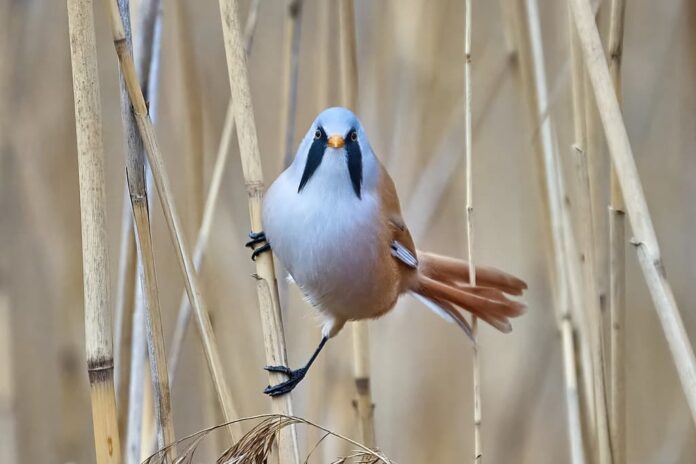
Scientific Name: Panurus Biarmicus
A bearded tit is a small bird that is only around 12.5 centimeters big in size. It has a rotund body with a very long tail, and its wings are short. A male bearded tit has a blue-gray head, a cinnamon-brown brown body, and a white throat. It has two prominent black stripes on each side of its bill that resemble a drooping mustache which earns the bird its common name. As for the females, they are dull in color with an entirely buff-brown head and body, and they lack a mustache. Just like other small birds out there, this one feeds on insects, insect larvae, seeds, and spiders that it can find. These birds are weak fliers so they usually stay low while flying over reeds looking for food.
4Inca Tern
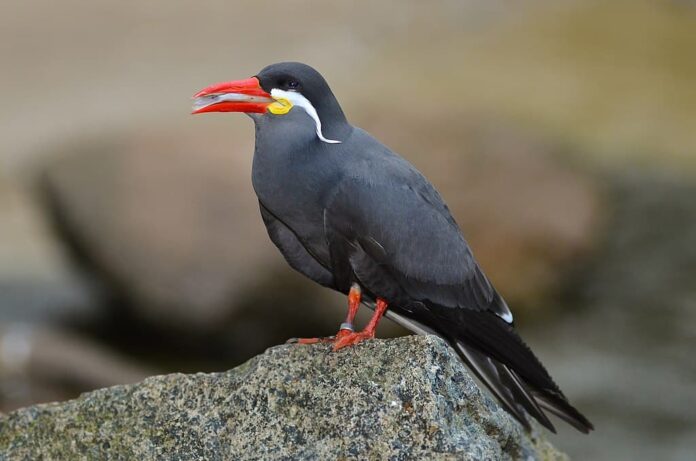
Scientific Name: Larosterna Inca
An Inca tern has a medium size from 39 to 42 centimeters long, and its overall appearance is simply fascinating. The plumage of the birds is quite colorful for a tern, especially with a dash of colors here and there. Adult Inca terns have a dark slate-gray body, and their forked tail is black while their legs and feet are dark red. The trailing edge of their wings and the outer edges of their flight feathers are white in color. The most eye-catching feature is the white stripe extending back from the base of the bill to its neck. These white stripes on each side of the bird’s face make it look like it has a beard. The length of their beard indicates the bird’s health, the longer it is, the healthier the bird. Also, their mustache doesn’t grow until they are around two years old.
Inca terns live along the Pacific coasts of Chile, Ecuador, and Peru but they are also vagrants of Central America and Hawaii. Just like other terns, they feed primarily on small fish like anchovies as well as plankton crustaceans. At the same time, they also take on carrion or offal if there is any. One of the most interesting parts is that they can travel in large flocks of up to 5,000 birds or more. When traveling in large flocks, they congregate around fishing boats or follow the feeding patterns of cormorants, dolphins, and sea lions. Smart birds, indeed. Unfortunately, this beautiful bird is a near-threatened species due to climate change and human harvesting.
5Three-Wattled Bellbird
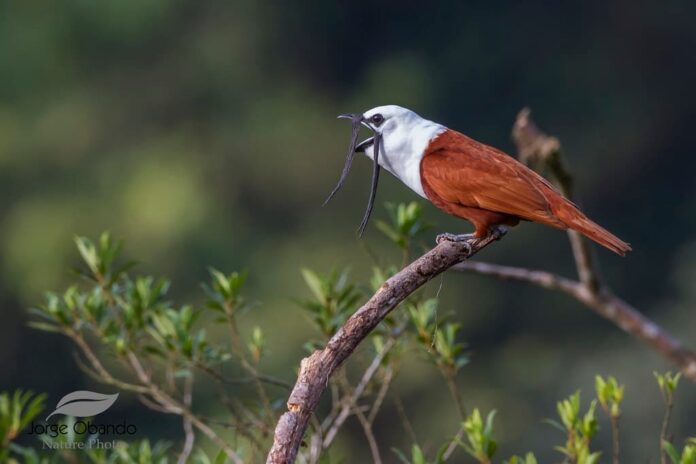
Scientific Name: Procnias Tricarunculatus
This was the bird that inspired me to write about birds with beards, its appearance says it all. Males and females of this species have completely different looks, and only the males have all the distinctive features. A male has a chestnut brown plumage while the head is white, with 3 long wattles that look like a weird beard. Males also have a loud bell-like call that can reach up to 100 decibels which can be heard from a long distance. Meanwhile, a female has olive plumage with yellowish streaks on the underpart, and she has no wattles. Three-wattled bellbirds have a very small range across the mountainous regions of Costa Rica. As frugivores, they feed on fruits and their most favorite fruits are avocados. Sadly, their population is rapidly declining to due habitat destruction; hence their Vulnerable status on the IUCN Red List.
6White Bellbird
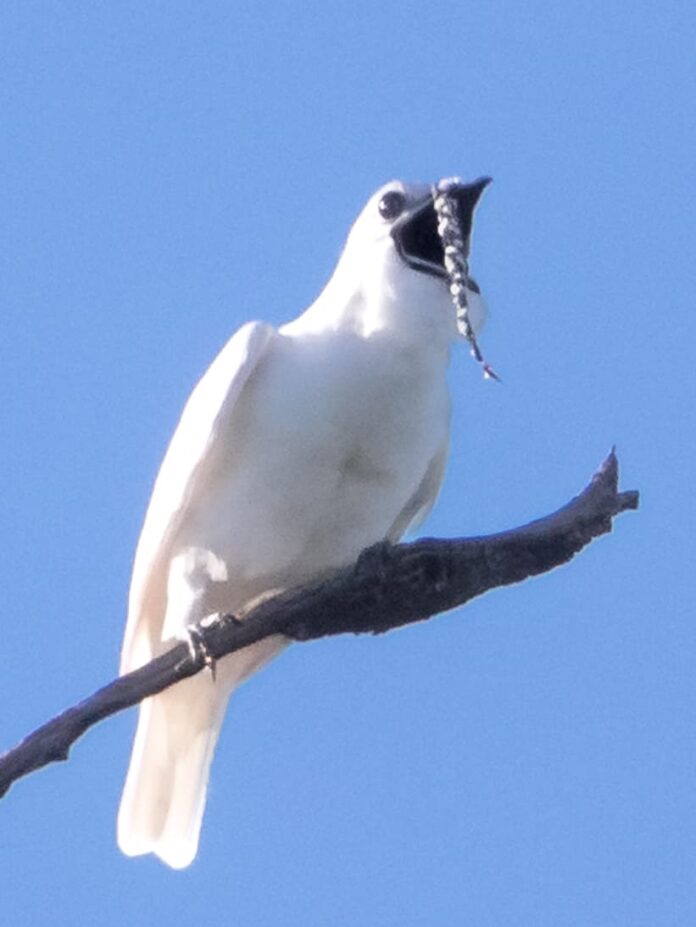
Scientific Name: Procnias Albus
Our final birds with beards are no other than the three-wattled bellbirds’ cousins, the white bellbirds. A white bellbird is a beautiful white bird with “one” fleshy black wattle that we call a beard. This wattle dangles from the top and hangs down the side of its black bill, usually on the right side. Only the males have the wattles, and female white bellbirds have the same appearances as the female three-wattled bellbirds. Though the mustache is rather incomplete, we should still count them as birds with beards because they are extremely fascinating. First of all, they are the world’s loudest birds, with the ability to produce vocalizations up to 125.4 decibels. The loudness is equivalent to a rock concert. Don’t make a good neighbor, do they? The sole purpose of this is to attract the attention of females, which is fair, the mustache is not necessarily attractive.
The distribution of the white bellbirds is across Brazil, French Guiana, Guyana, Suriname, Trinidad and Tobago, and Venezuela. They inhabit moist tropical and subtropical forests where they feed on berries and fruits as well as insects occasionally. The wide mouths of these birds allow them to swallow berries whole, making feeding more convenient. Researchers also believe that the wide beaks also play a part in making the loud calls possible.
Related Post: Birds With Crowns

